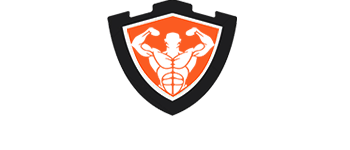The Effects Of Non Alkylated Steroids On The Liver

Non Alkylated Steroids
Many individuals make the mistake of thinking that because injectable steroids aren’t designed to “survive” the first pass metabolic liver process, this means they are completely safe on the organ and no liver protection is needed.
Through reading our earlier sections, you should already have some idea as to why this confidence in injectable steroids being completely safe towards the liver is misplaced.
The key to understanding why lies in the liver’s functions – it is designed to process and filter blood. When we inject anabolic compounds, they directly enter our bloodstream.
This means that they become part of the contents of the blood, and like anything else must then be processed via the liver. As such, concluding that there is no risk to the liver whatsoever makes no scientific or biological sense.
This is only the same as alcohol; it might come in liquid form, but ultimately the alcohol we consume has to enter the bloodstream, which in turn means it has to enter the liver. How could an injectable steroid be an exception to this rule? The truthful answer is that it couldn’t.
There are always going to be debates in regards to the why’s and the how’s of the MANNER in which injectables are processed versus orals, but ultimately the realistic conclusion is the same: the liver has to deal with them, therefore they could have a detrimental effect on it.
It’s actually on product strength that we should consider another point – many people deem injectables to be “weaker” in terms of their hazardous capacity because they are “diluted” in liquid.
You only need to look at the difference in dosage quantity between orals and injectables to know that something is fundamentally wrong with this concept.
Injectables are always dosed at a much higher level than orals are – sometimes more than ten times the quantity. Though winstrol is an exception in that it is identical in both injectable and oral form on an mg for mg basis, most injectable products need to be implemented at a level of several hundred mg.
You might need a rawer product to achieve that impact, but ultimately you are still achieving the same impact nonetheless. That’s how your liver and bloodstream see it at least.
Suddenly, an item that is supposedly “weaker” on an mg for mg basis is then on exactly the same par as an oral variety in regards to strength and toxicity risk, save for the fact that it only gets processed by the liver once rather than twice. This one time processing does indeed mean that the risk is lowered, but it’s important to understand that there is still a risk there – that “one time” processing is still on the same level as one of the liver “passes” that an oral AAS undergoes, even if it is only once.
We’ll now observe the different injectable varieties and
their potential impact on the liver.
Testosterone (low-medium risk):
Masteron (low risk):
If you’re taking liver protection, then it’s highly unlikely that you’ll encounter any liver-related issues whatsoever over the course of your cycle.
Trenbolone (medium risk):
Boldenone (low - medium risk):
Liver protection will almost definitely keep adverse issues completely at bay when using this item.
Nandrolone (low - medium risk):
Even with a slightly higher anabolic rating than testosterone, users shouldn’t expect to encounter any serious liver issues if they are using adequate protection.
Primobolan (low risk):
Its rating earns it a place in the low risk category, and with the relevant protection you are truly unlikely to face any adverse liver issues whatsoever during the course of your time with it.
Testosterone (low-medium risk):
Masteron (low risk):
If you’re taking liver protection, then it’s highly unlikely that you’ll encounter any liver related issues whatsoever over the course of your cycle.
Trenbolone (medium risk):
Protection will likely ensure that you don’t encounter any problems, but some may still slip through and present themselves. Regular testing (as with any steroid type) is the key to issue detection (we’ll soon discuss this element in greater detail.)
Boldenone (low - medium risk):
Liver protection will almost definitely keep adverse issues completely at bay when using this item.
Nandrolone (low - medium risk):
Even with a slightly higher anabolic rating than testosterone, users shouldn’t expect to encounter any serious liver issues if they are using adequate protection.
Primobolan (low risk):
Its rating earns it a place in the low risk category, and with the relevant protection you are truly unlikely to face any adverse liver issues whatsoever during the course of your time with it.
